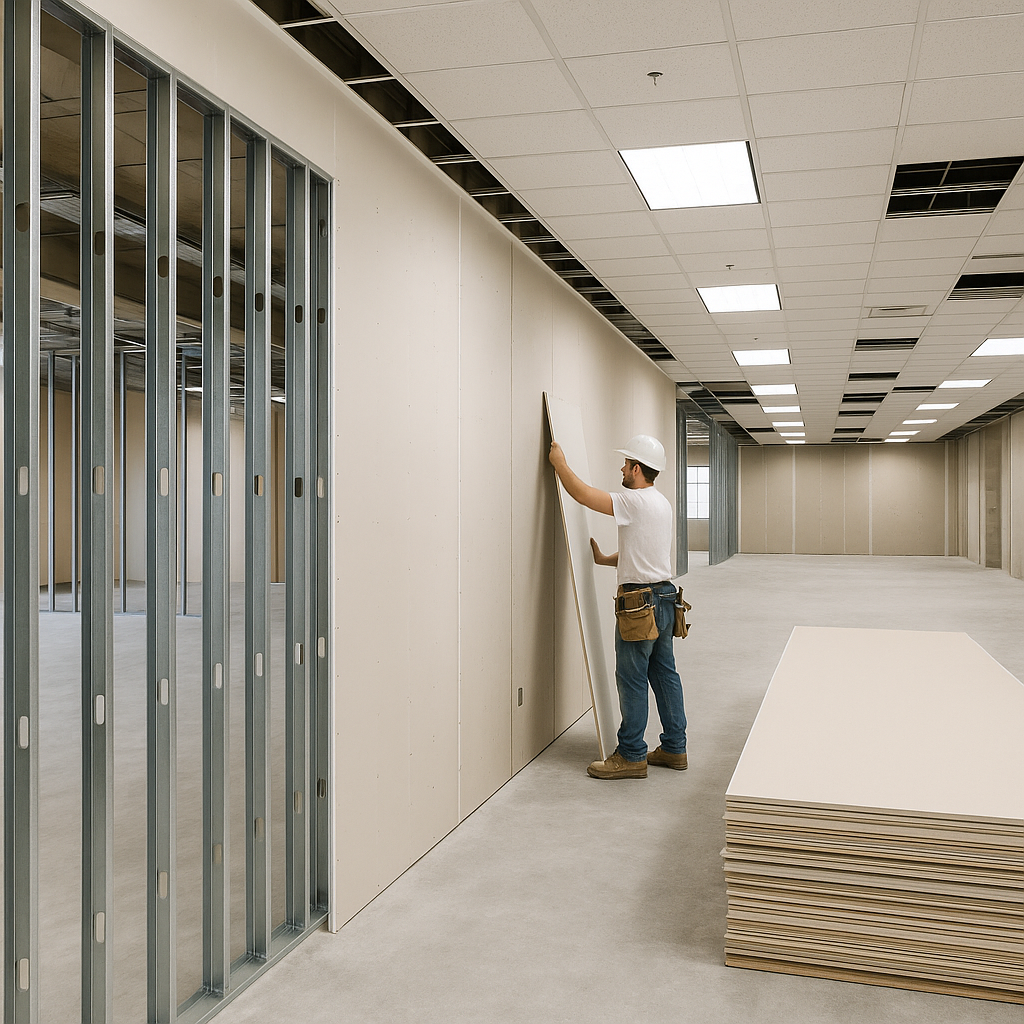
Drywall logistics are often underestimated during preconstruction planning, yet board size is one of the most critical factors influencing labor efficiency, waste, transport, and jobsite flow. As architects, engineers, and general contractors know, decisions about material dimensions are more than just line items—they're operational choices that ripple through the schedule and budget. Failing to evaluate board size logistics early in the estimating process can lead to compromised installation sequences and unexpected costs.
Choosing the right board dimensions affects the number of panels needed, how they’re transported, and how they’re maneuvered into position. Longer boards reduce seams, improving labor productivity and finish quality. However, they may require additional crew support, specialized handling equipment, or adjustments to access routes.
Optimizing board size selection based on room dimensions and wall heights reduces material waste and off-cut accumulation. This not only drives direct cost savings on material but also lowers disposal costs and reduces site clutter, promoting a safer work environment.
Estimators should evaluate whether the marginal savings from reduced waste outweigh the handling and staging costs associated with non-standard panel sizes. Integrating this consideration early avoids reactive decision-making during installation.
Large format panels offer installation benefits but can complicate delivery and staging. Before specifying or finalizing quantities in an estimate, validate:
Failure to account for these factors can result in jobsite bottlenecks or damage to materials during handling—leading to reorders and rework.
Longer boards can reduce the time needed for installation by minimizing joints, but only when the site conditions support their use. When estimating labor, it’s important to balance crew efficiency with ergonomic stress and potential delays from difficult panel placement.
Using a system like Active Estimating, teams can benchmark production rates by board size across similar past projects to identify the most efficient material strategy per zone.
Drywall estimates are often driven by square footage, but this alone doesn’t account for the logistical implications of board length. A drywall estimating software platform that allows for layered data input—such as delivery paths, labor skillsets, and preferred board formats—offers a smarter foundation for accurate cost forecasting and sequencing strategies.
Versioned updates, clear assumptions, and visual validations ensure that decisions around board sizes are deliberate, traceable, and easily adjusted as field conditions evolve.
In drywall construction, it’s not just the material that matters—it’s how it moves. Board size directly influences labor, waste, handling safety, and site logistics. Estimators and project teams who account for these variables early in the process will enjoy smoother operations and better bottom-line performance. As the industry embraces data-driven workflows, tools like Active Estimating help transform these logistical decisions into measurable outcomes.
Schedule a personalized demo to see how Active Estimating can work for your specific needs.
